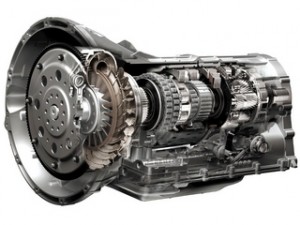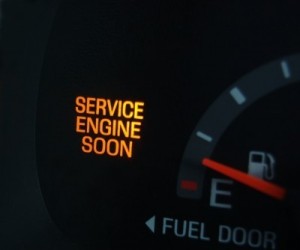Determining what problem(s) your car has may seem like an impossible task, especially to the untrained eyes and ears of the average driver. It may be helpful to think of your car’s inner workings as similar to that of the human body. For instance, if you have chest pain that could point toward any number of health issues, but if the chest pain exists in addition to difficulty breathing, then it is much more likely that asthma (or something very similar) is the cause. Automotive problems are diagnosed in a similar manner. Problems that involve mechanical systems typically exhibit distinct sensations and sounds that act as indicators that a certain process isn’t working the way it is intended to. As soon as you recognize that something seems a bit “off” with your vehicle’s functionality, it is time to assess the issue and look for a way to fix it.
Diagnosing car problems yourself may seem like an impossible task, but try to think of it in terms of your own body. For instance, if your stomach begins to hurt without warning, you’ll probably start thinking of the last thing you ate in order to figure out why you’re having the pain. A similar type of thinking goes into diagnosing car trouble. The moment you start noticing something out of the ordinary, it’s time to start considering the problem and finding a way to fix it.
 Your car’s transmission is a complex mechanical system that controls the application of power from the engine to the driveshaft. It experiences more wear and tear over time than most other parts of your vehicle due to the heat and friction produced by their many moving and interacting components. Major issues are bound to arise if your transmission is not well maintained and/or symptoms of a problem are not checked by a professional soon after they develop.
Your car’s transmission is a complex mechanical system that controls the application of power from the engine to the driveshaft. It experiences more wear and tear over time than most other parts of your vehicle due to the heat and friction produced by their many moving and interacting components. Major issues are bound to arise if your transmission is not well maintained and/or symptoms of a problem are not checked by a professional soon after they develop.
Transmission repairs or replacements are inconvenient, stressful and typically quite expensive, so it’s a good idea to pay attention to any activity that seems unusual. Adhering to the recommended maintenance procedures and schedule intended to prevent problems will help your transmission last longer, perform better and require fewer repairs over its lifespan. That said, if you’re having some car trouble, it is important to know what the most common types of transmission problems are so that you can easily diagnose them and get them fixed. Here is a list of 10 symptoms of transmission trouble and what signs you should look for.
Lack of Response
Ever notice that while driving that the car hesitates or refuses to go into gear? If you have, then there is definitely something wrong. The moment a driver shifts from park to drive the car should immediately go into the proper gear. For automatic transmissions, you might notice that when shifting into drive or park that there is a delay before you feel the gear engage. This is usually a transmission-based concern. Manual transmissions can have the same lacking response issue, but after shifting into gear the engine’s RPMs will surge, but the car won’t move as fast as the engine sounds like it’s going. This is usually caused by a clutch that needs to be replaced, but may sometimes point to a more severe problem.
Whining, Clunking and Humming
It’s impossible to say exactly what your car will sound like when there is trouble with your transmission, but one thing is for sure, you’ll get a “I haven’t heard that sound before” feeling when you notice it. The sounds that are produced vary widely between different makes and models, but the best way to describe them is that you’ll probably hear a humming, buzzing or whining noise.
Manual transmissions will emit sounds that can be described as being slightly more mechanical, louder and abrupt sounding. A clunking sounds when you shift gears almost always lies within a transmission, while constant velocity joins or the differential may be the source if the clunking is coming from the underside of your car.
As mentioned already, it is always best to get the problem diagnosed and repaired as soon as possible and not wait until later when you “find the time” or “have the money”. If you wait until later what would have been a relatively inexpensive repair can easily become a much more costly one.
Leaking/Low Fluid
 A leak is probably the most recognizable symptom and should be repaired as soon as possible. Letting the fluid leak is one of the most common causes transmission break down. Automatic transmission fluid (ATF) is the life-blood of a transmission as it lubricates, cleans and conditions the seals and acts as hydraulic fluid. Without it (or even if it gets too low), the engine will seize up and stop working completely.
A leak is probably the most recognizable symptom and should be repaired as soon as possible. Letting the fluid leak is one of the most common causes transmission break down. Automatic transmission fluid (ATF) is the life-blood of a transmission as it lubricates, cleans and conditions the seals and acts as hydraulic fluid. Without it (or even if it gets too low), the engine will seize up and stop working completely.
ATF is bright red in color, clear and smells somewhat sweet if everything is working correctly. If this is what you find on your driveway, then all that needs to be fixed is the hole. If the fluid is dark and/or has a burnt smell then it’s time to get the fluid changed or flushed and repairs might be required. To check if you’re running low on fluid, take your car for a short drive to warm it up and then lift the hood and read the dipstick (be sure the vehicle is on level ground). Unlike motor oil, transmission fluid is not burned off or consumed by a car so if the level is low then there is a leak somewhere that must be patched. It is recommended to top up the fluid anyway even if the leak still exists to make sure there is enough fluid for the transmission to function properly until you get it fixed.
To check the fluid level for a manual transmission, you must check at the transmission case (usually through the fill plug) – not with a dipstick under the hood.
Grinding or Shaking
A car is supposed to run smoothly and without any shaking, or jerking, and there is not supposed to be any grinding sounds. These all suggest that there is a problem with the gears. Manual transmissions commonly indicate problems by making a grinding noise or feeling when you shift into a gear. If the grinding occurs after engaging the clutch and shifting, this can be sign that the clutch may need to be replaced or adjusted. That said, it can also point towards several other issues including damaged or worn out gear synchronizes.
Automatic transmissions act a little differently. Instead of making a grinding noise, you will likely feel it take some time to wiggle into gear at first instead of the typical smooth transitions. As the problem gets worse, the transitions into the next gear become more jarring and involve more shaking. There are a few other reasons for grinding or shaking, but the appropriate course of action is still to have it inspected and serviced.
Burning Smell
 Any burning smell coming from your car is a cause for concern. Overheating transmission fluid is one of the causes of a burning smell. Transmission fluid helps keep the parts lubricated and cooled so that they don’t get worn out and damaged. If the fluid breaks down, the system runs too hot which it results in increased friction and corrosive activity as well as the build up of additional sludge and debris. If this is not taken care of, the transmission will eventually damage itself enough to break down completely. The end result is an expensive replacement. Common causes include low fluid level or using the incorrect brand/type of fluid. To check for these, see the instructions in the section on Low/Leaking Fluid above.
Any burning smell coming from your car is a cause for concern. Overheating transmission fluid is one of the causes of a burning smell. Transmission fluid helps keep the parts lubricated and cooled so that they don’t get worn out and damaged. If the fluid breaks down, the system runs too hot which it results in increased friction and corrosive activity as well as the build up of additional sludge and debris. If this is not taken care of, the transmission will eventually damage itself enough to break down completely. The end result is an expensive replacement. Common causes include low fluid level or using the incorrect brand/type of fluid. To check for these, see the instructions in the section on Low/Leaking Fluid above.
Refuses to Go Into Gear
If the car will not shift after engaging the clutch and trying to move the stick, take a look at the fluid to make sure that it is at the right level. Other causes include using the incorrect thickness (type) of fluid and the clutch linkage or shift cables needing adjustment. The source of the problem could also be the vehicle’s computer system. If you’ve already inspected the fluid, you can try resetting it. To do this, detach the battery and let it stand for thirty minutes. Then, reattach and allow the system to reset itself. This usually takes around thirty minutes. If this doesn’t work either, then it’s time to take it to a mechanic.
Check Engine Light
 The check engine light located on your car’s dashboard is a great early indicator that something is about to go wrong (or already has) with your car, and in particular with your transmission. While the light turns on for a number of reasons other than transmission issues, it very important not to ignore this helpful warning sign. There are sensors placed in many areas of a car’s engine that alert the computer if it senses unusual activity coming from a particular process. The sensors on a transmission can pick up on the slightest jerks and vibrations than you are not able to see or feel.
The check engine light located on your car’s dashboard is a great early indicator that something is about to go wrong (or already has) with your car, and in particular with your transmission. While the light turns on for a number of reasons other than transmission issues, it very important not to ignore this helpful warning sign. There are sensors placed in many areas of a car’s engine that alert the computer if it senses unusual activity coming from a particular process. The sensors on a transmission can pick up on the slightest jerks and vibrations than you are not able to see or feel.
Take the vehicle in and have it inspected. They can take look and immediately tell what is happening through the use of similar diagnostic tools and the car’s computer. If you’d like to diagnose the problem yourself (and possibly save yourself a trip to the mechanic’s) you can buy a diagnostic scan tool that is plugged into the instrument panel on the driver’s side and return a code that corresponds to the part that needs attention. Whatever you do, do not assume that the check engine light can wait because it might be warning you of a serious problem in the near future.
Transmission Noisy in Neutral
Luckily, a transmission that is noisy (goes “bump”) when it is in neutral could have an inexpensive, simple solution such as adding some fluid or changing it. This could do the trick, as it does for several other issues on this list. If that doesn’t work, the transmission may require professional attention to replace worn out parts, most commonly the bearings, worn gear teeth or the reverse idler gear.
Gears Slipping
A transmission stays in a designated gear until a shift is performed by the driver (manual) or the computer (automatic). If the transmission is spontaneously slipping in an out of gear (or simply popping into neutral) while driving, I don’t need to tell you that this is a serious safety risk. When you need to step on the gas to avoid a dangerous situation, you need power delivered to the wheels, end of story. The cause can be the link that holds the gears is worn or broken. Get your car inspected and repaired as soon as possible.
Dragging Clutch
A dragging clutch describes the symptom experienced by manual transmissions that involves the clutch disk failing to disengage the flywheel when the clutch pedal is pressed. The clutch is still spinning with the engine which makes it anywhere from difficult to impossible to change gears. This difficulty is accompanied by a grinding noise each time you try to change gears. Fortunately, this problem is considerably less expensive to repair than many other issues. More often than not, the cause of this is too much slack in the clutch pedal. With too much slack available, the linkage between the clutch disk and pedal can’t pull the clutch disk away from the flywheel.
Conclusion
It is important to keep up a regular maintenance schedule for your car. Many times major expensive repairs can be avoided if the vehicle is properly maintained. This is especially true if you notice something unusual. The car should be taken in immediately for service. Brushing up on your knowledge of transmissions (at least the basics) is highly recommended as it can help you save money by avoiding costly inspections and doing simple procedures such as changing transmission fluid yourself as well as making you knowledgeable enough to avoid being over-repaired, over charged or simply ripped off.








